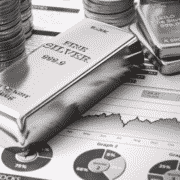The current state of the U.S. stock market should raise concerns for investors. Short-term market timers are exhibiting near-record levels of bullish sentiment, which contrarian analysts believe is a clear indication that the market is likely to trend downwards in the near future.
It’s important to rely on objective indicators rather than our own memories when evaluating the level of bullishness. Often, we can be influenced by the mood swings of the market, much like a fish trying to understand water from within it.
To put it into perspective, clients without access to our sentiment indicators have guessed that bullish sentiment has only grown modestly in the past six to nine months. In reality, it has swung from near-record bearishness last October to near-record bullishness in recent times.
One way to measure this sentiment is through the average recommended stock market exposure level among a subset of short-term stock market timing newsletters, known as the Hulbert Stock Newsletter Sentiment Index (HSNSI). On October 12th, at the market’s low, the HSNSI stood at the 0.08th percentile since 2000. Today, it’s at the 99.99th percentile.
Keep in mind that the S&P 500 SPX, +0.24% has risen over 25% since its October low. While contrarians don’t necessarily expect a decline of that magnitude, they believe that the odds are in favor of a decline.
AI Bubble Trouble
The recent surge in stocks associated with artificial intelligence (AI) has led some to draw comparisons to the internet bubble of March 2000. The chart below offers a visual representation of how current sentiment measures up.
The HSNSI Chart: A Tale of Bullishness
The HSNSI chart is a visual representation of the sentiment in the U.S. market over approximately three months of trading days. It provides insights into the current state of the market and allows us to compare it to previous periods.
A Closer Look at the Lines
In the chart, the orange line depicts the sentiment leading up to the peak of the internet bubble, while the gray line represents the sentiment leading up to the present time. Interestingly, over the last month of trading, these two lines have closely correlated with each other. This correlation raises concerns as it suggests that the current levels of bullishness are as high as they were during the internet bubble.
A Faint Silver Lining
However, there is a glimmer of optimism in the first two-thirds of the chart. During this period, the orange line consistently remained higher than the gray line. This indicates that the bullish sentiment in early 2000 was consistently stronger for a more extended period than what we have observed in recent weeks. It’s worth noting, though, that this may not provide substantial support for the bulls.
Contrarian Outlook
From a contrarian perspective, the best-case scenario for the bulls would be a significant market decline in the coming days. This would lead to investors rebuilding a solid “wall of worry,” creating a foundation for a more substantial future advance. On the other hand, if the market continues to struggle higher, pushing bullish sentiment into uncharted territory, it could be seen as a negative sign.
Expert Insights
More: Discover the preferences of top investment newsletters regarding tech, Tesla, and Meta Platforms.
Also read: Although stocks are currently overbought, it may not be the optimal time to sell.











Comments